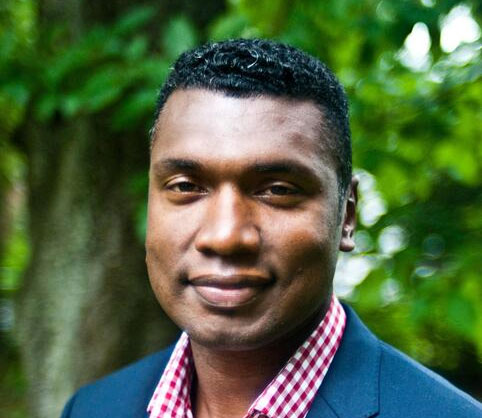In the vast symphony of human expression, few disciplines captivate the mind and stir the soul quite like music and physics. What’s more, these seemingly disparate endeavours share a clandestine bond, a hidden harmony that resonates through the ages.
Even the great Albert Einstein, whose ideas reshaped our understanding of the Universe, famously stated that had his path led him away from physics, he would have found solace in playing music.
This sentiment has long underscored the notion that music and physics are not merely subjects of study but intertwined facets of human creativity.
As a scientist and musician, I've been privileged to navigate between both disciplines, discovering the profound connections beneath the surface.
My own journey into this entwined world began on the streets of the Bronx, a crucible of culture where the rhythms of hip-hop and the allure of science collided in unexpected ways. It was in 1988, amidst the bustling energy of the Bronx, luminaries like DJ Jazzy Jay and Rocky Bucano were pioneering new directions in hip-hop production.
Their studio, affectionately known as ‘The Lab’, became a crucible of creativity, where artists and producers pushed the boundaries of musical expression. Here I first glimpsed the intersection of art and science when I first encountered the digital sampling technology – the technology that laid down the foundation for much of hip-hop music.
Years later, when I made my way to Imperial College London, I was once again immersed in a space where creativity and inquiry converged. On my daily walk to work, I regularly stopped into the studio of the legendary producer Brian Eno, where I witnessed firsthand his unique blend of artistic expression and scientific exploration.
Here, amidst the synthesizers and mixing boards, Eno’s ideas were able to thrive. His studio was more than just a place of music-making; it was a laboratory of sonic experimentation, where the boundaries between art and science dissolved in a symphony of innovation.
Read more:
- Music therapy: The power of music for health
- Why does listening to music do nothing for me?
- Human brains are naturally tuned to hear music
This convergence of art and science inspired me to delve deeper, culminating in the writing of my book, The Jazz of Physics. Through its pages, I sought to unravel the intricate threads that bind music and physics, revealing an interconnectedness that defies easy categorisation.
Drawing upon the parallels between musical improvisation and quantum uncertainty, I explored the shared language of rhythm and resonance that underpins both disciplines. Yet, even at his early realisation, I knew that I was only at the beginning of a journey that would take me further than I ever imagined.
Driven by a desire to share this revelation with others, I embarked on a new endeavour: the creation of The Jazz of Modern Physics course at Brown University, where I now work.
Here, I sought to bridge the gap between disciplines, introducing students to the wonders of modern physics through the principles of music and sound. The response was overwhelming, as students from diverse backgrounds embraced the opportunity to explore the intersection of art and science in new and unexpected ways.
From the harmonics of string theory to the rhythms of quantum mechanics, they discovered a new appreciation for the symphony of the Universe, conducted in the language of mathematics and melody.
But my mission didn’t end there. Guided by a belief in the transformative power of education, I founded the Sound+Science afterschool program, offering students from underserved communities a chance to explore the frontiers of music and physics.
In this sanctuary of sound, students are empowered to unleash their creativity, using advanced electronic music equipment to study the physics of waveforms and harmonics. Through hands-on exploration and collaboration with PhD students in both music and physics, they can discover the beauty of mathematical abstraction and the thrill of sonic experimentation.
In the end, what emerges is more than just a synthesis of notes and equations; it is a celebration of human ingenuity and the potential of the human spirit. In the harmonies of music and the equations of physics, we find a reflection of ourselves, a reminder that we are not merely observers of the Universe but active participants in its ongoing symphony.
So let us embrace this harmonious convergence, where the language of science finds expression in the melodies of music, and the boundaries between disciplines blur into insignificance. In this fusion of art and science lies the key to unlocking the mysteries of the cosmos and the depths of the human soul.
Read more:
